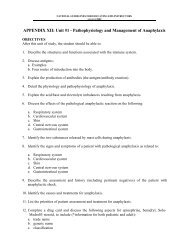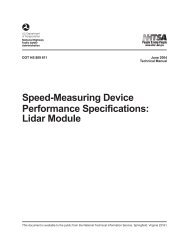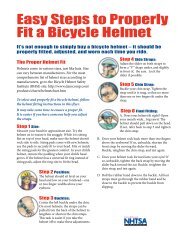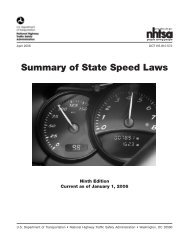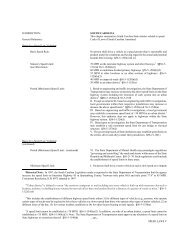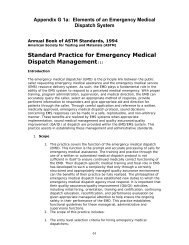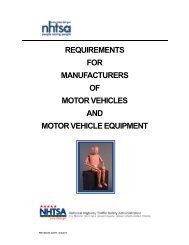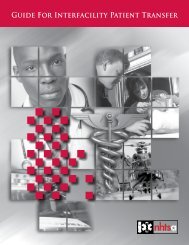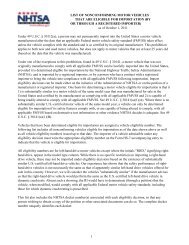The Criminal Justice System: A Guide for Law Enforcement ... - NHTSA
The Criminal Justice System: A Guide for Law Enforcement ... - NHTSA
The Criminal Justice System: A Guide for Law Enforcement ... - NHTSA
Create successful ePaper yourself
Turn your PDF publications into a flip-book with our unique Google optimized e-Paper software.
Distribution - the movement of the drug throughout the body<br />
Metabolism - the body’s way of breaking down a complex substance into smaller pieces<br />
in an ef<strong>for</strong>t to get rid of it<br />
Elimination - getting the drug or its smaller pieces out of the body through urine, feces,<br />
sweat, saliva, or breath<br />
PRACTICE POINT<br />
PLAIN LANGUAGE<br />
<strong>The</strong> polysyllabic words used in toxicology have the potential to become mind-numbing to the<br />
non-toxicologist audience (pharmacokinetics, pharmacodynamics, epidemiological studies,<br />
methylenedioxymethamphetamine, tetrahydrocannabinol, etc.) This is not to suggest you can<br />
never use these words. However, when you use them, immediately explain their meanings in<br />
common, everyday language—and then try to limit repeating the words and substitute as<br />
much as possible common language to convey your message. Refrain from using several of<br />
these terms within a short statement:<br />
Scientific<br />
Studies conducted by some of our most renowned <strong>for</strong>ensic toxicologists demonstrate the<br />
pharmacokinetics of methylenedioxymethamphetamine to be typically excreted 65%<br />
unchanged, with the principal metabolite being methylenedioxyamphetamine. Our<br />
epidemiological studies further show that the driving population and others are adversely<br />
affected by ingestion of MDMA, with symptoms including ataxia and diaphoresis,<br />
accompanied by psychomotor and memory dysfunction.<br />
Plain Language<br />
Scientific studies done by experts show that MDMA, a relatively common street drug—<br />
you may have heard of it as “ecstasy”—seems to make people feel more alert, even hyper. In<br />
reality, someone on MDMA will frequently be uncoordinated, restless, sweat heavily, have<br />
trouble controlling their movements, and be unable to think clearly. Obviously, a person in<br />
this condition is a risk to himself and others when driving.<br />
Having thus painted a “word picture” of what a person on MDMA looks like, the toxicologist<br />
can now compare the picture of this uncoordinated individual to what a person should look<br />
and act like when driving.<br />
<strong>The</strong> Science of Toxicology<br />
“Alcohol is a drug, but not all drugs are alcohol.”<br />
When testifying about the effects of alcohol and/or other drugs on a person’s<br />
ability to drive, it will be necessary to go into some detail about the physical and mental<br />
effects of the substance(s) involved. You may be asked about retrograde extrapolation,<br />
zero order kinetics, first order kinetics, pharmacodynamics, and a host of other complex<br />
(to the lay person) topics. It is safe to assume the average juror has no knowledge<br />
21



